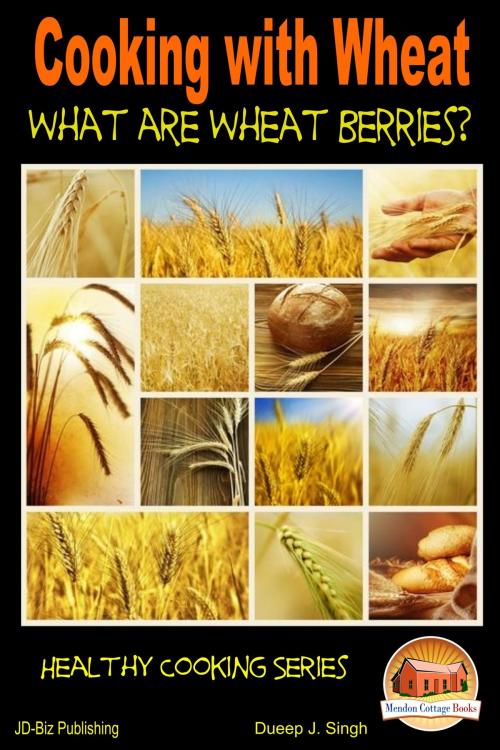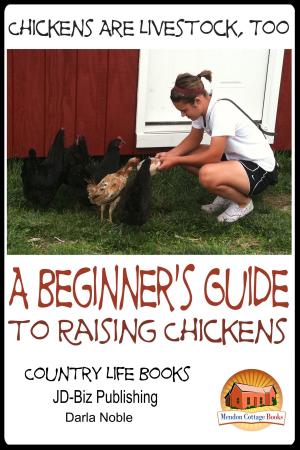Cooking with Wheat: What are Wheat Berries?
Nonfiction, Health & Well Being, Health, Nutrition & Diet, Diets| Author: | Dueep J. Singh | ISBN: | 9781311135209 |
| Publisher: | Mendon Cottage Books | Publication: | January 1, 2015 |
| Imprint: | Smashwords Edition | Language: | English |
| Author: | Dueep J. Singh |
| ISBN: | 9781311135209 |
| Publisher: | Mendon Cottage Books |
| Publication: | January 1, 2015 |
| Imprint: | Smashwords Edition |
| Language: | English |
Cooking with Wheat - What are Wheat Berries?
Table of Contents
Introduction
What Is a Wheat “Berry”
Nutritional Specifications of Wheat
The difference between parboiled And Cracked Wheat
Our Daily Bread
Plain White Bread
How Do You Get the Right Flour Consistency?
Shaping the Dough
Making Plaits
Dinner Rolls
Mini cottage loaves
Testing the bread
Making a Cheese Loaf
Perfect Bread Tips
More Traditional Wheat Dishes
Bulgur Pilaf
Tabbouleh- Tabouli Salad
Frumenty
Cous-cous
Appendix
Traditional Chicken Soup
Panjiri- Pinnis
Conclusion
Author Bio
Publisher
Introduction
When man decided more than 10,000 years ago that he had had enough of having a life as a hunter and wanted to settle down as a farmer, that was a signal change in the history of mankind.
Prehistoric history does not tell us where man first began cultivating cereals as a grain for his family and for the people of his settlement. But archaeological excavations have found vestiges of this cultivated plant in settlements more than 10,000 years old in the Mesopotamian region. I would not be surprised if this wild grass was first cultivated in the area, especially near the river Tigris, Syria, Iraq, Lebanon, Babylon, etc.
After that, the cultivation of this particular wild grass, in the form of wheat spread all over the world, including Europe, Asia, Africa, – especially Egypt, where this grain was brewed into beer and drunk in large quantities by Pharoah and peasant alike millenniums ago – Turkey and all the places where there were hungry mouths to feed, and there were fertile lands to provide that grain to feed them.
This book introduces you to one of these most prolific and healthy cereals – wheat.
Wheat in its original form was a wild grass. Down the ages, it began to get domesticated, and the grains grew larger. Instead of being harvested by the wind in its wild form, the grains stayed attached to spikelets, until the farmer came with his scythe to harvest a rich crop of golden wheat.
Cooking with Wheat - What are Wheat Berries?
Table of Contents
Introduction
What Is a Wheat “Berry”
Nutritional Specifications of Wheat
The difference between parboiled And Cracked Wheat
Our Daily Bread
Plain White Bread
How Do You Get the Right Flour Consistency?
Shaping the Dough
Making Plaits
Dinner Rolls
Mini cottage loaves
Testing the bread
Making a Cheese Loaf
Perfect Bread Tips
More Traditional Wheat Dishes
Bulgur Pilaf
Tabbouleh- Tabouli Salad
Frumenty
Cous-cous
Appendix
Traditional Chicken Soup
Panjiri- Pinnis
Conclusion
Author Bio
Publisher
Introduction
When man decided more than 10,000 years ago that he had had enough of having a life as a hunter and wanted to settle down as a farmer, that was a signal change in the history of mankind.
Prehistoric history does not tell us where man first began cultivating cereals as a grain for his family and for the people of his settlement. But archaeological excavations have found vestiges of this cultivated plant in settlements more than 10,000 years old in the Mesopotamian region. I would not be surprised if this wild grass was first cultivated in the area, especially near the river Tigris, Syria, Iraq, Lebanon, Babylon, etc.
After that, the cultivation of this particular wild grass, in the form of wheat spread all over the world, including Europe, Asia, Africa, – especially Egypt, where this grain was brewed into beer and drunk in large quantities by Pharoah and peasant alike millenniums ago – Turkey and all the places where there were hungry mouths to feed, and there were fertile lands to provide that grain to feed them.
This book introduces you to one of these most prolific and healthy cereals – wheat.
Wheat in its original form was a wild grass. Down the ages, it began to get domesticated, and the grains grew larger. Instead of being harvested by the wind in its wild form, the grains stayed attached to spikelets, until the farmer came with his scythe to harvest a rich crop of golden wheat.















